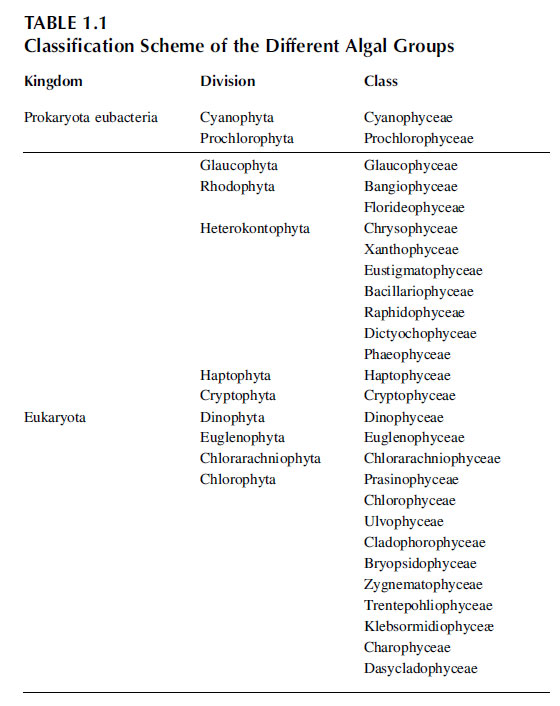Classification of Algae
No easily definable classification system acceptable to all exists for algae because taxonomy is under constant and rapid revision at all levels following every day new genetic and ultrastructural evidence. Keeping in mind that the polyphyletic nature of the algal group is somewhat inconsistent with traditional taxonomic groupings, though they are still useful to define the general character and level of organization, and the fact that taxonomic opinion may change as information accumulates, a tentative scheme of classification is adopted mainly based on the work of Van Den Hoek et al. (1995) and compared with the classifications of Bold and Wynne (1978), Margulis et al. (1990), Graham and Wilcox (2000), and South and Whittick (1987). Prokaryotic members of this assemblage are grouped into two divisions: Cyanophyta and Prochlorophyta, whereas eukaryotic members are grouped into nine divisions: Glaucophyta, Rhodophyta, Heterokontophyta, Haptophyta, Cryptophyta, Dinophyta, Euglenophyta, Chlorarachniophyta, and Chlorophyta (Table 1.1).


